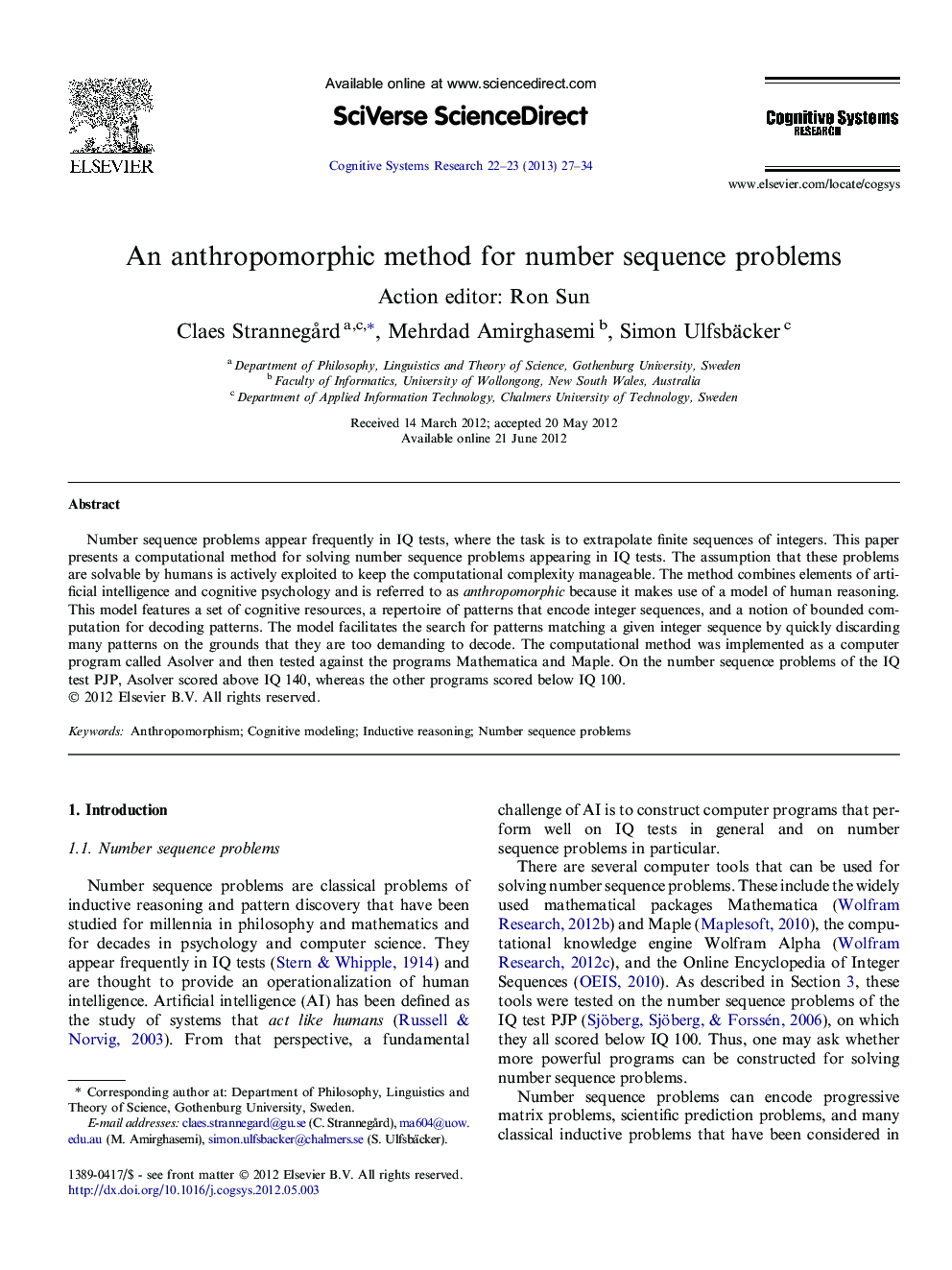| کد مقاله | کد نشریه | سال انتشار | مقاله انگلیسی | نسخه تمام متن |
|---|---|---|---|---|
| 378412 | 659151 | 2013 | 8 صفحه PDF | دانلود رایگان |

Number sequence problems appear frequently in IQ tests, where the task is to extrapolate finite sequences of integers. This paper presents a computational method for solving number sequence problems appearing in IQ tests. The assumption that these problems are solvable by humans is actively exploited to keep the computational complexity manageable. The method combines elements of artificial intelligence and cognitive psychology and is referred to as anthropomorphic because it makes use of a model of human reasoning. This model features a set of cognitive resources, a repertoire of patterns that encode integer sequences, and a notion of bounded computation for decoding patterns. The model facilitates the search for patterns matching a given integer sequence by quickly discarding many patterns on the grounds that they are too demanding to decode. The computational method was implemented as a computer program called Asolver and then tested against the programs Mathematica and Maple. On the number sequence problems of the IQ test PJP, Asolver scored above IQ 140, whereas the other programs scored below IQ 100.
Journal: Cognitive Systems Research - Volumes 22–23, June 2013, Pages 27–34